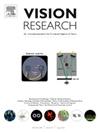The Gestalt computational model by persistent homology
IF 1.4
4区 心理学
Q4 NEUROSCIENCES
引用次数: 0
Abstract
As a classic theory in cognitive psychology, Gestalt theory elucidates basic principles in visual perception. However, the Gestalt principles are validated mainly by psychological experiments, lacking quantitative research supports and theoretical coherence. In this paper, we utilize persistent homology, a mathematical tool in computational topology, to develop a unified computational model for Gestalt principles, addressing the challenges of quantification and computation. This Gestalt computational model provides a quantitative approach to several key Gestalt principles, and it shows that these Gestalt principles can be uniformly calculated using persistent homology, thus developing a coherent theory for Gestalt principles in computation. Moreover, it is anticipated that the Gestalt computational model can serve as a significant computational model in the field of computational psychology, and help the understanding of human visual perception.
持久同调的格式塔计算模型。
格式塔理论是认知心理学的经典理论,阐述了视觉感知的基本原理。然而,格式塔原理主要是通过心理学实验来验证的,缺乏定量的研究支持和理论一致性。在本文中,我们利用计算拓扑中的一个数学工具——持久同调,为格式塔原理建立了一个统一的计算模型,解决了量化和计算的挑战。该格式塔计算模型为几个关键的格式塔原理提供了定量方法,并表明这些格式塔原理可以使用持久同调统一计算,从而为计算中的格式塔原理发展了一个连贯的理论。预计格式塔计算模型可以作为计算心理学领域的重要计算模型,并有助于理解人类的视觉感知。
本文章由计算机程序翻译,如有差异,请以英文原文为准。
求助全文
约1分钟内获得全文
求助全文
来源期刊

Vision Research
医学-神经科学
CiteScore
3.70
自引率
16.70%
发文量
111
审稿时长
66 days
期刊介绍:
Vision Research is a journal devoted to the functional aspects of human, vertebrate and invertebrate vision and publishes experimental and observational studies, reviews, and theoretical and computational analyses. Vision Research also publishes clinical studies relevant to normal visual function and basic research relevant to visual dysfunction or its clinical investigation. Functional aspects of vision is interpreted broadly, ranging from molecular and cellular function to perception and behavior. Detailed descriptions are encouraged but enough introductory background should be included for non-specialists. Theoretical and computational papers should give a sense of order to the facts or point to new verifiable observations. Papers dealing with questions in the history of vision science should stress the development of ideas in the field.
 求助内容:
求助内容: 应助结果提醒方式:
应助结果提醒方式:


